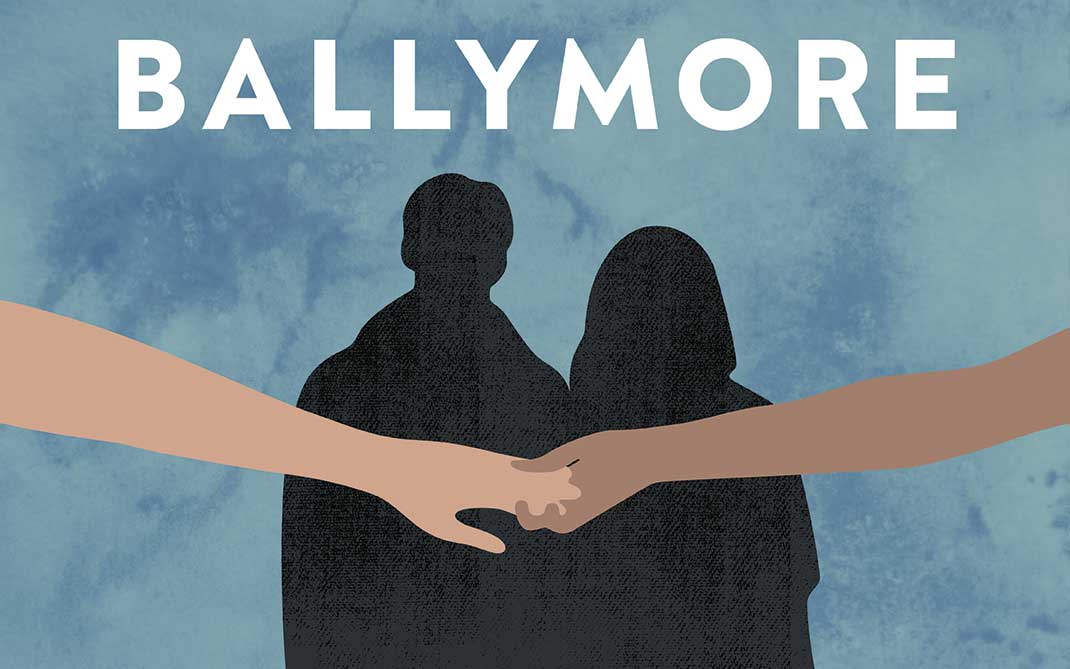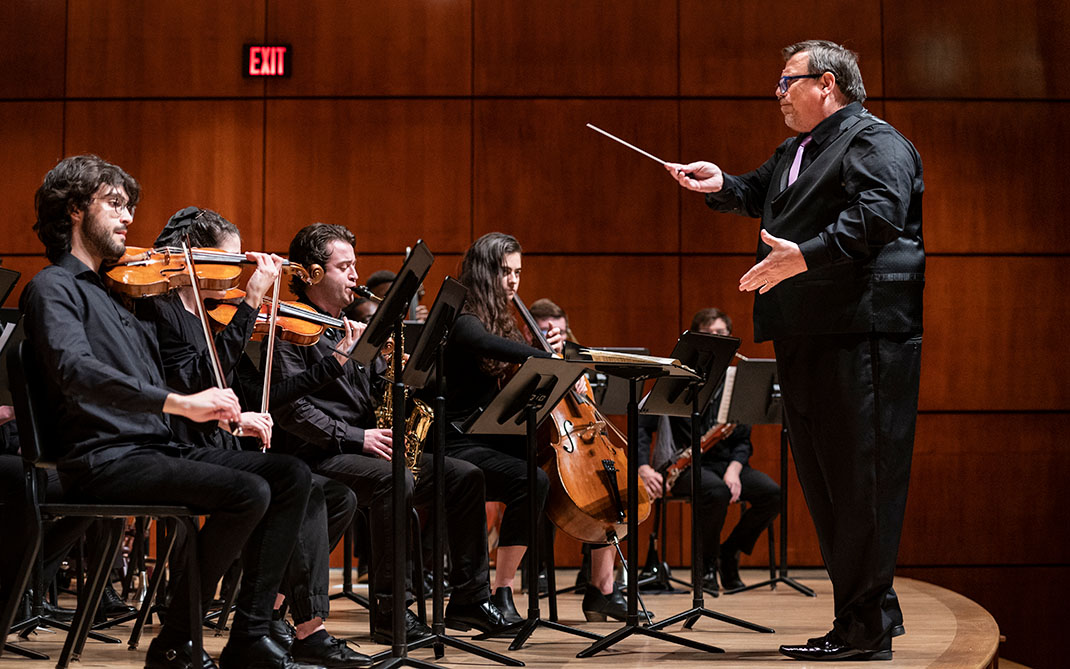CARES Act Information
CARES Act Information
UNCSA recognizes the extra expenses that students have faced due to the interruption of campus operations due to the COVID-19 pandemic. UNCSA has been awarding emergency grants to students from multiple funds, including the student portion of Coronavirus Aid, Relief, and Economic Security (CARES) Act from the U.S. Department of Education.
These awards are to help with expenses related to the disruption of campus operations due to coronavirus, including cost of attendance, such as food, housing, transportation, course materials, technology, health care and child care. UNCSA’s plan was established to assist students with immediate needs for relocation and completion of the spring term, and those students with the greatest need, in accordance with federal guidelines.
Federal CARES Act
The University of North Carolina School of the Arts signed and returned to the Department the Certification and Agreement for Higher Education Emergency Relief Funding (HEERF) and the assurance that the institution has used, or intends to use, no less than 50% of the funds received under Section 18004(a)(1) of the CARES Act to provide Emergency Financial Aid Grants to students. The institution has received $434,443.
The estimated total number of students at the institution eligible to participate in programs under Section 484 in Title IV of the Higher Education Act of 1965, and thus eligible to receive Emergency Financial Aid Grants to students under Section 18004(a)(1) of the CARES Act, is 609.
December 1, 2020 update
As of December 1, 2020 the University has awarded $431,281 to 450 students.
UNCSA acknowledges that it has signed and returned to the Department of Education the Certification and Agreement for the Institutional Portion of the Coronavirus Response and Relief Supplemental Appropriations Act, 2021 (CRRSAA), Pub. L. 116-260, are governed by Section 314 of CRRSAA. The total amount authorized funds awarded to UNCSA for the Institutional Portion of CARES was $833,922.
March 31, 2021 update
The total amount of HEERF I (CARES) Emergency Financial Aid Grants distributed to students as of March 31, 2021 is $434,443. The total number of students at UNCSA who received a HEERF I (CARES) Emergency Financial Aid Grant as of March 31, 2021 is 452.
As of March 31, the Quarterly Budget and Reporting chart below indicates the dollar amount used with the CRRSAA, Institutional portion. The funds were used towards campus safety and operations, such as disinfecting and cleaning of dorms and other campus facilities, purchase of personal protective equipment (PPE), purchases of cleaning supplies, adding personnel to increase the frequency of cleaning, the reconfiguration of facilities to promote social distancing, etc.
June 30, 2021 update
As of June 30, the Quarterly Budget and Reporting chart below indicates the dollar amount used with the CRRSAA, Institutional portion. The funds were used towards campus safety and operations, such as disinfecting and cleaning of dorms and other campus facilities, purchase of personal protective equipment (PPE), purchases of cleaning supplies, adding personnel to increase the frequency of cleaning, the reconfiguration of facilities to promote social distancing, etc., paying for hotels or other off-campus housing for students who need to leave campus early due to coronavirus infections or campus interruptions.
UNCSA acknowledges that it has signed and returned to the Department of Education the Certification and Agreement for the Institutional Portion of American Rescue Plan Act of 2021 (ARP) governed by section 2003 of the ARP and section 314 of the Coronavirus Response and Relief Supplemental Appropriations Act, 2021 (CRRSAA) (Pub. L. 116-260). The total amount authorized funds awarded to UNCSA for the Institutional Portion of CRRSAA) was $1,134,552.
As of June 30, 2021, the Quarterly Budget and Reporting chart below indicates the dollar amount used with the CRRSAA, Institutional portion. The funds were used towards campus safety and operations, such as disinfecting and cleaning of dorms and other campus facilities, purchase of personal protective equipment (PPE), purchases of cleaning supplies, adding personnel to increase the frequency of cleaning, the reconfiguration of facilities to promote social distancing, etc.
UNCSA acknowledges that it has signed and returned to the Department of Education the Certification and Agreement for the Institutional Portion of the Coronavirus Response and Relief Supplemental Appropriations Act, 2021 (CRRSAA), Pub. L. 116-260, which is governed by Section 314 of CRRSAA. The total amount authorized funds awarded to UNCSA for the Institutional Portion of CARES was $833,922.
September 30, 2021 update
December 31, 2021 update
March 31, 2022 update
June 30, 2022 update
Sept. 30, 2022 update
View Chart
December 31, 2022 update
March 31, 2023 update
June 30, 2023 update
September 30, 2023 update
December 31, 2023 update
March 31, 2024 Update
June 30, 2024 Update
September 30, 2024 Update
December 31, 2024 Update
March 31, 2025 Update
CARES Act Grants
Students were notified via email on April 30, 2020, to inform them of the background and distribution process of the CARES-HEERF. Funds have been targeted to students who experienced the disruption of the Spring 2020 semester. To be eligible for these grants, students must have completed a Free Application for Federal Student Aid (FAFSA) and be deemed eligible for Title IV funding.
All CARES funds are being deposited directly to the student’s account and refunded to their bank via direct deposit. Students who have not signed up for direct deposit are encouraged to do so, but will receive checks if no direct deposit information is available. UNCSA began processing funds the week of May 4, 2020. No funds from HEERF will be applied to any outstanding or future balances on the student account in accordance with the terms of the CARES Act.
Quarterly Budget and Expenditure Reporting
UNCSA acknowledges that it has signed and returned to the Department of Education the Certification and Agreement for the Institutional Portion of the Higher Education Emergency Relief Fund Formula Grants Authorized by Section 18004(a)(1) of the Coronavirus Aid, Relief, and Economic Security (CARES) Act. The total amount authorized funds awarded to UNCSA for the Institutional Portion of CARES was $434,443.
As of December 31, 2020, the Quarterly Budget and Reporting chart below indicates the dollar amount used with the CARES Act section 18004(a)(1), Institutional portion. The funds will be used towards the partial reimbursement for costs related to refunds made to students after March 22, 2020 for housing and food services that the University could no longer provide due to the disruption of campus operations because of COVID-19. Please view this chart for more information.





